1. Dollis Hill Estate
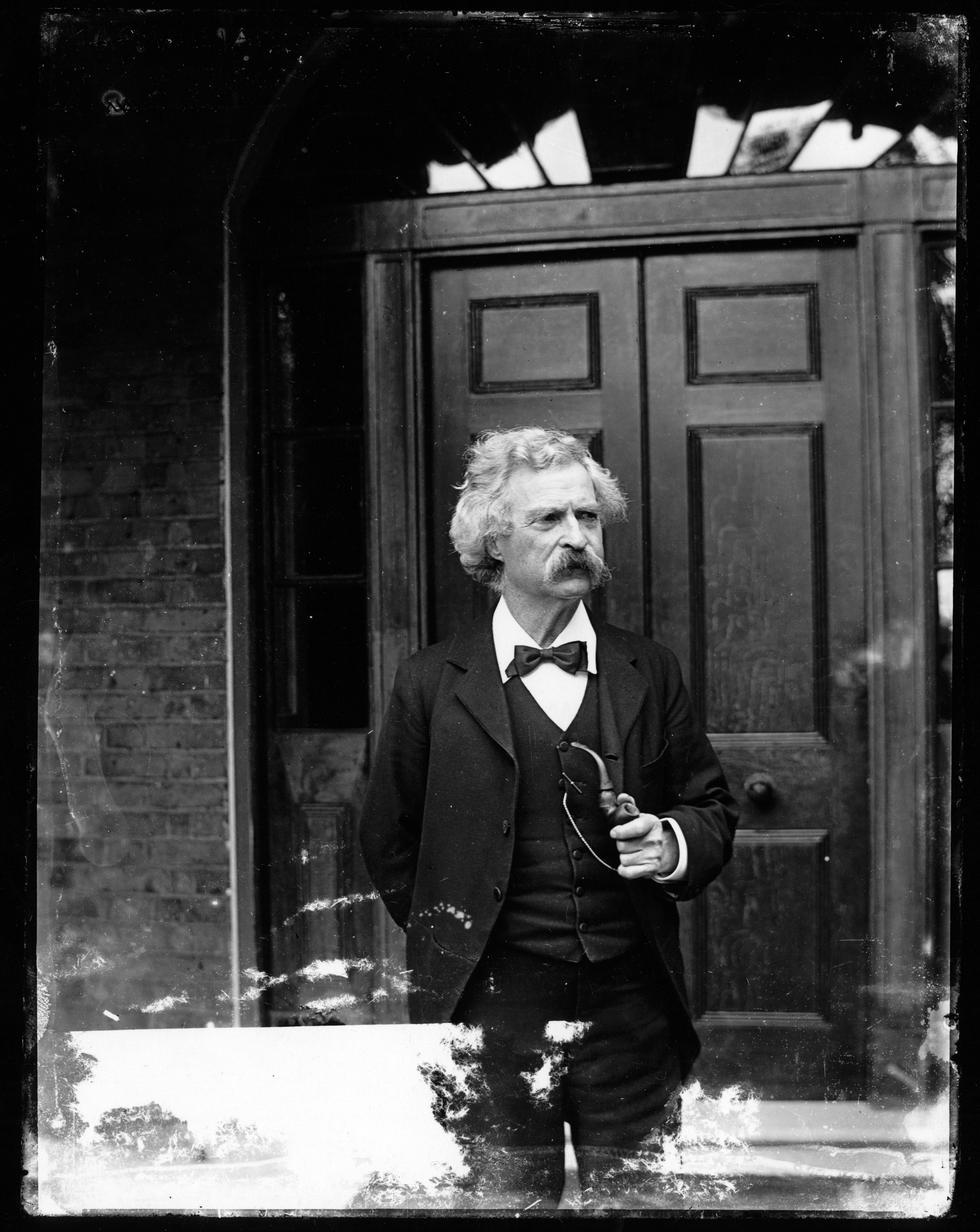 200 years ago this area was completely rural, with woods and farmland. The Finch family, one of the two important local families, bought up several pieces of land to make the Dollis Hill Estate. This included two farms, with the main farmhouse north of Dollis Hill Lane and the smaller one opposite it on the south. The farms around Willesden were well known for their hay, grown for the horses of London, and there were dairy farms producing milk.
200 years ago this area was completely rural, with woods and farmland. The Finch family, one of the two important local families, bought up several pieces of land to make the Dollis Hill Estate. This included two farms, with the main farmhouse north of Dollis Hill Lane and the smaller one opposite it on the south. The farms around Willesden were well known for their hay, grown for the horses of London, and there were dairy farms producing milk. In 1825 the family had enough money to replace the smaller farmhouse with a new house, named Dollis Hill House. Things did not go so well for them after 1850, when Henry Finch lost his lucrative post at the Royal Mint, so in 1861 they moved back into Dollis Hill Farm, which survived until the 1930s, and rented Dollis Hill House to Sir Dudley Coutts Marjoribanks, who later became Lord Tweedmouth.
2. Dollis Hill House and William Gladstone
In 1881 Lord Tweedmouth's daughter and her husband, Lord and Lady Aberdeen, moved in and they used it as a summer residence for 16 years. The Aberdeens were old friends of William Gladstone, who was Prime Minister for much of this time, and he frequently stayed with them for weekends, and sometimes for longer periods. Dollis Hill was particularly quiet and restful for a place so close to London, and Mr Gladstone, who was in his seventies by then, used to say that he felt better there than at any other place. His doctor sent him there whenever he was tired or unwell, and said that it "never failed".
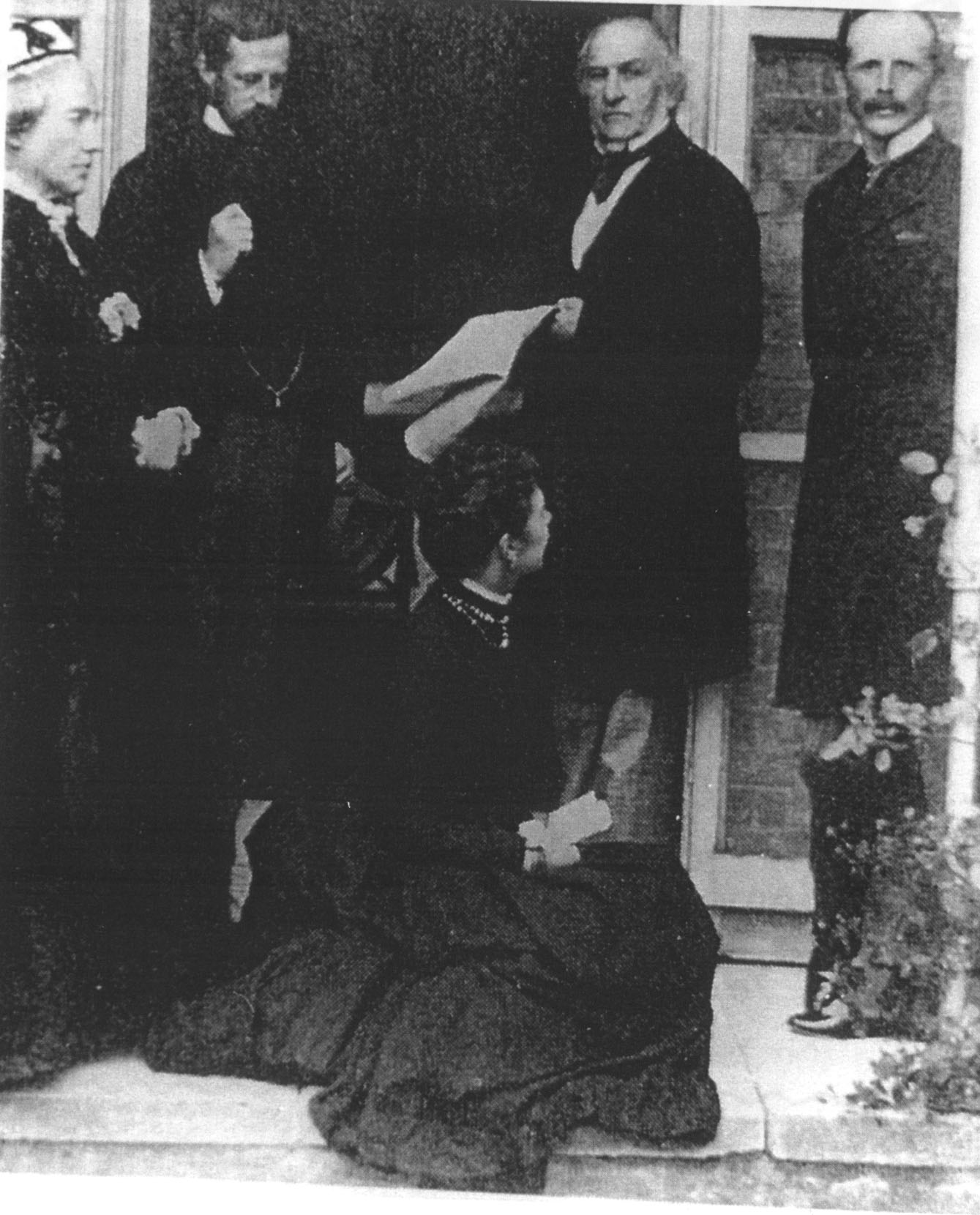 When the weather was fine, they often had their meals outside under the trees, which he particularly liked (he planted several trees himself), and he had a hammock slung between two trees to relax or read in. He also enjoyed having a dip in the pond by the house in the mornings.
When the weather was fine, they often had their meals outside under the trees, which he particularly liked (he planted several trees himself), and he had a hammock slung between two trees to relax or read in. He also enjoyed having a dip in the pond by the house in the mornings. There were lots of meetings and parties, especially on Saturdays, and many of the important politicians of the day visited to talk and plan. In May 1887 there was a Colonial Conference as part of the celebrations for Queen Victoria's Golden Jubilee, and Mr and Mrs Gladstone threw a large garden party. Representatives came from all parts of the Empire, including Africa, India, Canada, Australia and New Zealand. Delegations from the United States and other countries visited at other times. In 1889 the Gladstones celebrated their golden wedding anniversary with a breakfast at the house, but Mr Gladstone also enjoyed less glittering events given by the Aberdeens, helping to serve tea to the haymakers and playing around at tea parties for local children. But, above all, he came for relaxation. When people started gathering outside the parish church on Sundays, and on one occasion cheered him as he arrived, he decided to worship in a more distant and secluded church for that summer.
In 1897 Lord Aberdeen was appointed Governor-General of Canada and the Aberdeens moved out.
3. Gladstone Park
In 1899 Willesden Urban District Council decided that they needed to acquire another public open space before all the land was built over. (In 1841 the parish of Willesden had under 3,000 inhabitants, in 1871 over 15,000, in 1891 over 60,000, and by 1905 over 100,000.) They had already provided Queen's Park and Roundwood Park, and there was considerable local opposition to spending £30,000 of ratepayers' money on another park. However, the council managed to get contributions from, amongst others, Middlesex County Council, London County Council, Hampstead Vestry and Hendon District Council, and private donations and promises from individuals, to make up the full cost of £51,304.
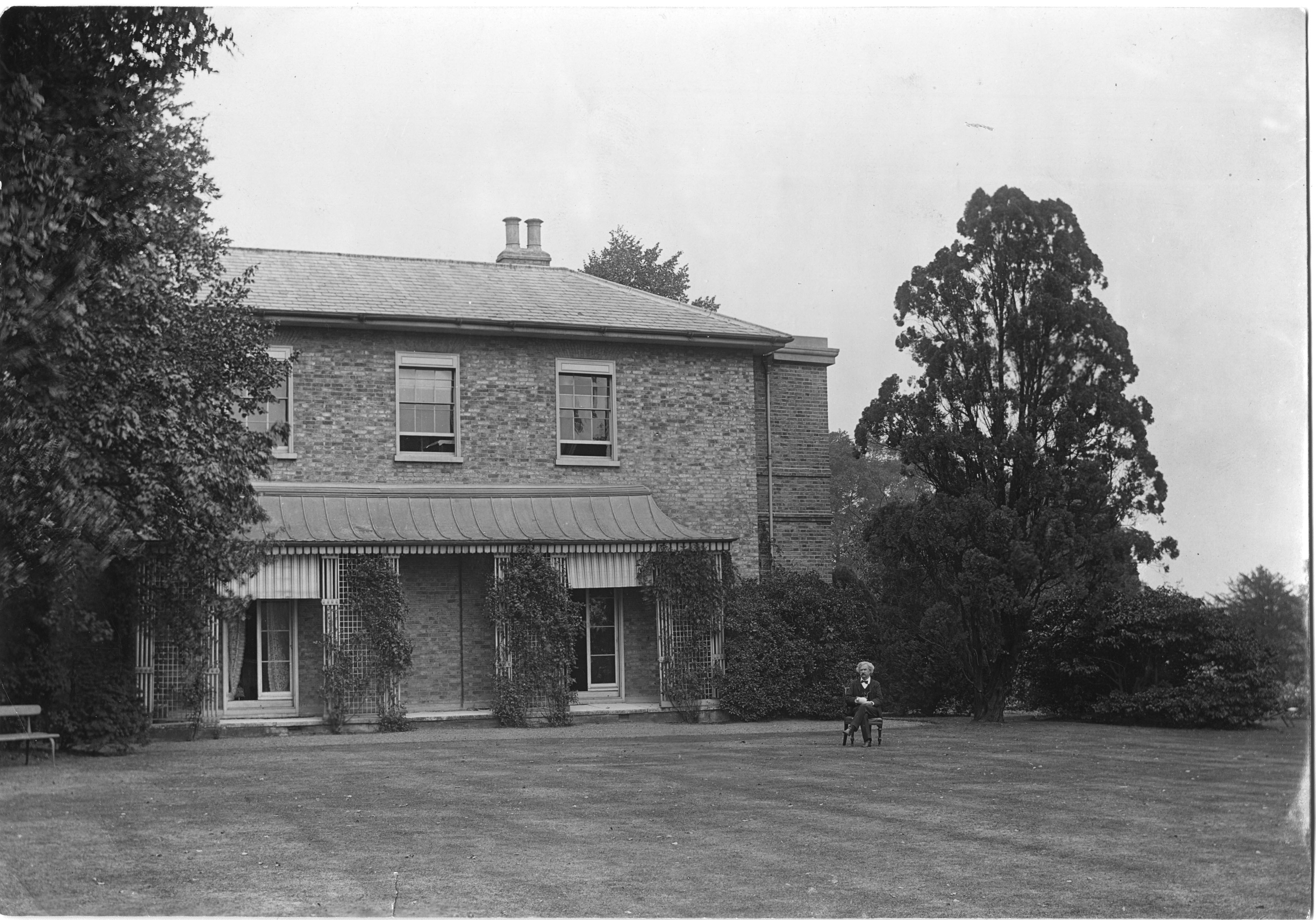 The house and approximately 96 acres of land to the south of Dollis Hill Lane were bought from Robert Finch, who continued to farm the land to the north of the lane. William Gladstone had died the year before, so they decided to name the park in his honour. This produced more opposition from his political opponents. However, the park was opened by Lord Aberdeen on 25th May 1901.
The house and approximately 96 acres of land to the south of Dollis Hill Lane were bought from Robert Finch, who continued to farm the land to the north of the lane. William Gladstone had died the year before, so they decided to name the park in his honour. This produced more opposition from his political opponents. However, the park was opened by Lord Aberdeen on 25th May 1901. 4. Mark Twain at Dollis Hill
Hugh Gilzean-Reid occupied the house after the Aberdeens moved out. He was a wealthy newspaper proprietor, and made some extensions.
 He continued to live in the house after it had been bought by the council, and he invited Mark Twain, the American author of Tom Sawyer and Huckleberry Finn, to stay in the summer of 1900. Twain wrote that he had "never seen any place that was so satisfactorily situated, with its noble trees and stretch of country, and everything that went to make life delightful, and all within a biscuit's throw of the metropolis of the world." "There is no suggestion of city here; it is country, pure and simple, and as still and reposeful as is the bottom of the sea." He later wrote "Dollis Hill comes nearer to being a paradise than any other home I ever occupied".
He continued to live in the house after it had been bought by the council, and he invited Mark Twain, the American author of Tom Sawyer and Huckleberry Finn, to stay in the summer of 1900. Twain wrote that he had "never seen any place that was so satisfactorily situated, with its noble trees and stretch of country, and everything that went to make life delightful, and all within a biscuit's throw of the metropolis of the world." "There is no suggestion of city here; it is country, pure and simple, and as still and reposeful as is the bottom of the sea." He later wrote "Dollis Hill comes nearer to being a paradise than any other home I ever occupied". 5. Tearooms and hospital
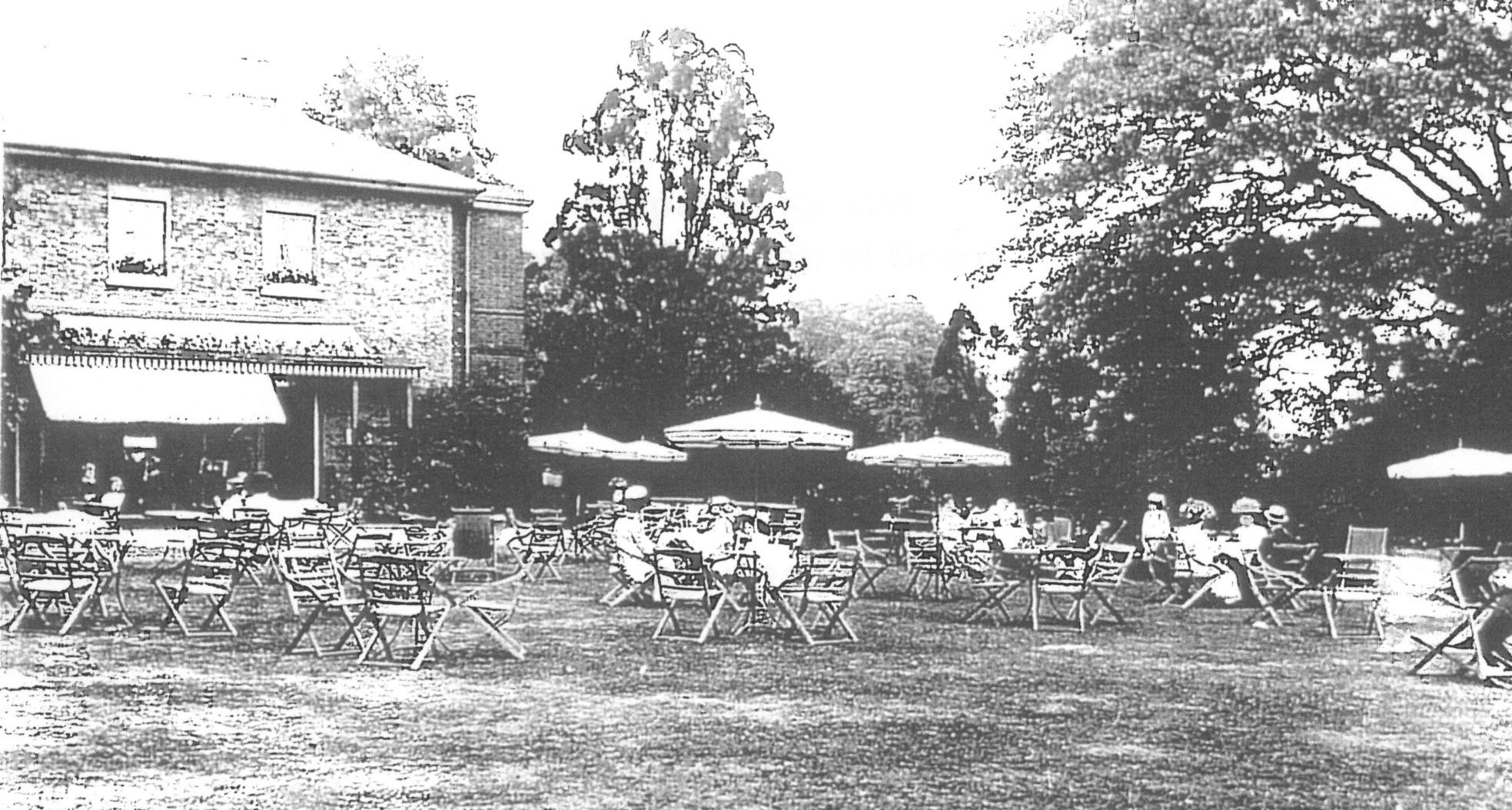 By 1906 some people felt that the house should be available for public use, so Gilzean-Reid moved out and the ground floor was converted to tearooms, which opened in 1909.
By 1906 some people felt that the house should be available for public use, so Gilzean-Reid moved out and the ground floor was converted to tearooms, which opened in 1909. During the First World War local people wanted to help, so the house became a convalescent and open-air hospital. There was no National Health Service then, so a fund was set up to pay for it. Many of the subscribers to the fund were teachers and children in local primary schools, and they helped to pay for the necessary improvements and running costs. The alterations to the house included installing electric light, a hot water supply and bathrooms, and the fund also provided open-air hut wards as well as contributing to the cost of heating, lighting, cleaning, laundry, drugs and dressings, and food for the patients and staff. Before the hospital opened people also gave items for the staff and patients' recreation, such as a Broadwood piano, billiard table, gramophone etc., but they had to appeal for people to donate clothing for the men. While the house was in use as a hospital, a local paper published a photograph called "The Battle of Dollis Hill", showing the nurses and patients enjoying a snowball fight, and tea parties, concerts and other entertainments were held on the lawn.
6. Later uses
When the Empire Exhibition was on at Wembley, in 1924-5, the house was used as accommodation for groups of children visiting the exhibition.
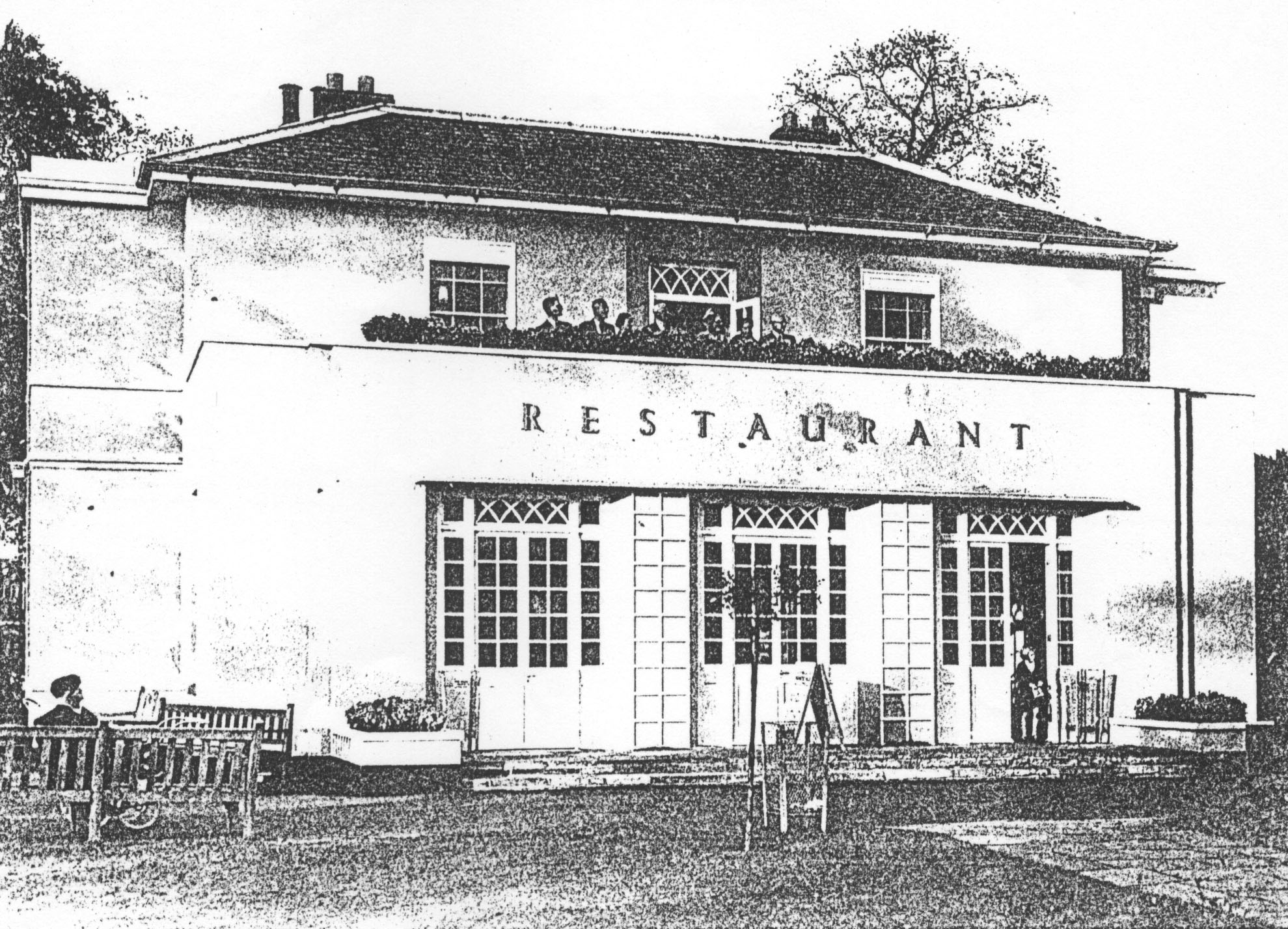 After that, the house became a restaurant, except for a period in the Second World War, when Churchill's War Cabinet met there during 1941, (presumably because it was pleasanter than the secret underground bunker up the hill at the Post Office Research Station).
After that, the house became a restaurant, except for a period in the Second World War, when Churchill's War Cabinet met there during 1941, (presumably because it was pleasanter than the secret underground bunker up the hill at the Post Office Research Station). From 1974 the house was used for training courses for catering students, until it was closed in 1989.
Present and future
 Dollis Hill House has not been used since 1989, except for a few summer arts classes. Surveys have shown that many local people would like the house to be available for use again, especially to provide refreshments to park users, but various proposals for repair and use have all fallen through because of the cost. Two major fires in 1995 and 1996 damaged the house badly, and it is now derelict.
Dollis Hill House has not been used since 1989, except for a few summer arts classes. Surveys have shown that many local people would like the house to be available for use again, especially to provide refreshments to park users, but various proposals for repair and use have all fallen through because of the cost. Two major fires in 1995 and 1996 damaged the house badly, and it is now derelict. We would like to get the house rebuilt, with a friendly cafe that would offer ice-creams, snacks and drinks for people using the park as well as meals. We would like to build an extra, large room between the house and the stables block (which is used as a small art-gallery), so that people can have weddings and large parties, and it could also be used for plays and concerts and other big events.
We want the rooms in the house to be available for people to come and use for all sorts of activities. Some of the things that people have suggested so far are: a display of local history, with a room for school groups to work in, exhibitions of work from local schools, evening classes etc., space for groups or classes in drama, singing and playing (or listening to) music, painting, drawing, print-making and other visual arts, craft activities such as sewing or pottery (perhaps with a kiln), sculpture, furniture making or restoring, meetings and parties.
 What would you like to do there if you could? Can you find out what your friends, neighbours and other members of your family would like to do? Please tell us by e-mailing info@dollishillhouse.org.uk.
What would you like to do there if you could? Can you find out what your friends, neighbours and other members of your family would like to do? Please tell us by e-mailing info@dollishillhouse.org.uk. 

